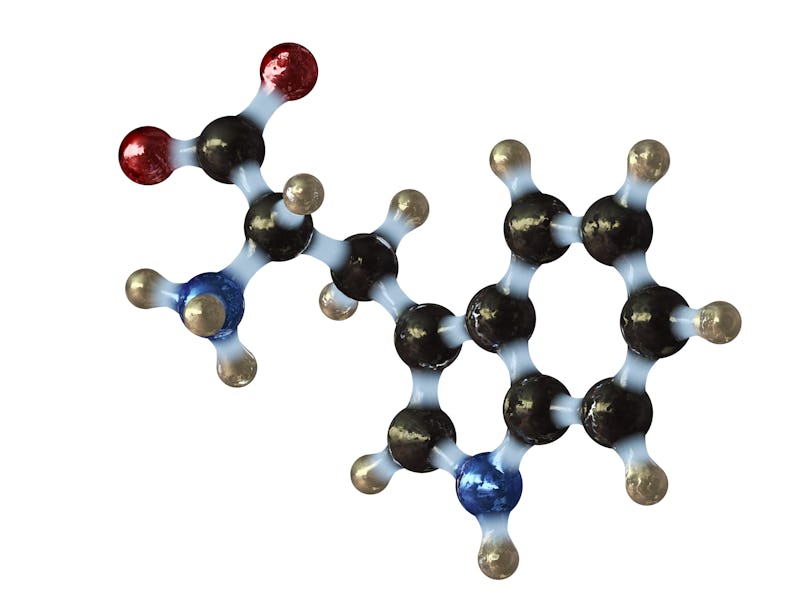Astronomers Find a Crucial Ingredient for Life in a Cloud in Space
The amino acid often associated with Thanksgiving dinner also exists in space, according to a recent study

We usually associate the amino acid tryptophan with turkeys, naps, or both, but it may also be related to our chances of finding alien life in the universe.
Data from NASA’s Spitzer space telescope reveals the telltale signature of infrared light emitted from molecules of an amino acid called tryptophan a thousand light years away in a cloud of star-forming gas called the Perseus Molecular Complex in a nebula called IC 348. It’s a sign that amino acids — the literal building blocks of proteins — may be a common ingredient in newborn star systems and planets.
“It is a very exciting possibility that the building blocks of proteins are widely present in the gas from which stars and planets form,” says astronomer Susana Iglesias-Groth, of the Instituto Astrofisica de Canarios, who led the recent study. “It may be key for the development of life in exoplanetary systems.”
Alien Turkeys? Sorry, but Not Quite
Iglesias-Groth and her colleagues found the spectral signature of tryptophan in a cold star-forming nebula in interstellar space.
Proteins are what make life work; they carry out most of the work that goes on inside and between cells. And they’re built from smaller molecules called amino acids. Most life on Earth owes its existence to about 20 amino acids, and one of them is tryptophan. The debate is still out on whether tryptophan in any form actually makes us sleepy, but the fact is we wouldn’t exist without it.
Also seldom mentioned in the annual discussion of turkey-induced comas is the fact that tryptophan is remarkably easy to spot with infrared telescopes. Every molecule absorbs and emits different wavelengths of light, like a chemical fingerprint, so by splitting light from a distant cloud of gas like IC348 into the individual wavelengths that make it up, scientists can identify which molecules are floating around in the nebula. In data from NASA’s Spitzer space telescope (RIP Spitzer), Iglesias-Roth and her colleagues saw the telltale light signature of tryptophan — and lots of it.
The discovery may mean that amino acids are a common part of the mix in the clouds of gas and dust that eventually collapse to form stars and planets. Other studies have found the molecule that forms cell membranes, floating in a cold cloud of molecular gas 100,000 light years away, and water also seems to form in interstellar space. When dense clouds of gas collapse to form stars, these ingredients become part of the starter kit from which new planets will be formed.
As a result, the chemistry that eventually becomes biology may actually be pretty common in the universe, which means life itself may not be a one-in-a-zillion happenstance after all.